Suunto 9 Baro smartwatch review
We check out the Suunto 9 Baro, the brand’s top spec smartwatch with a touchscreen and barometric pressure measurement
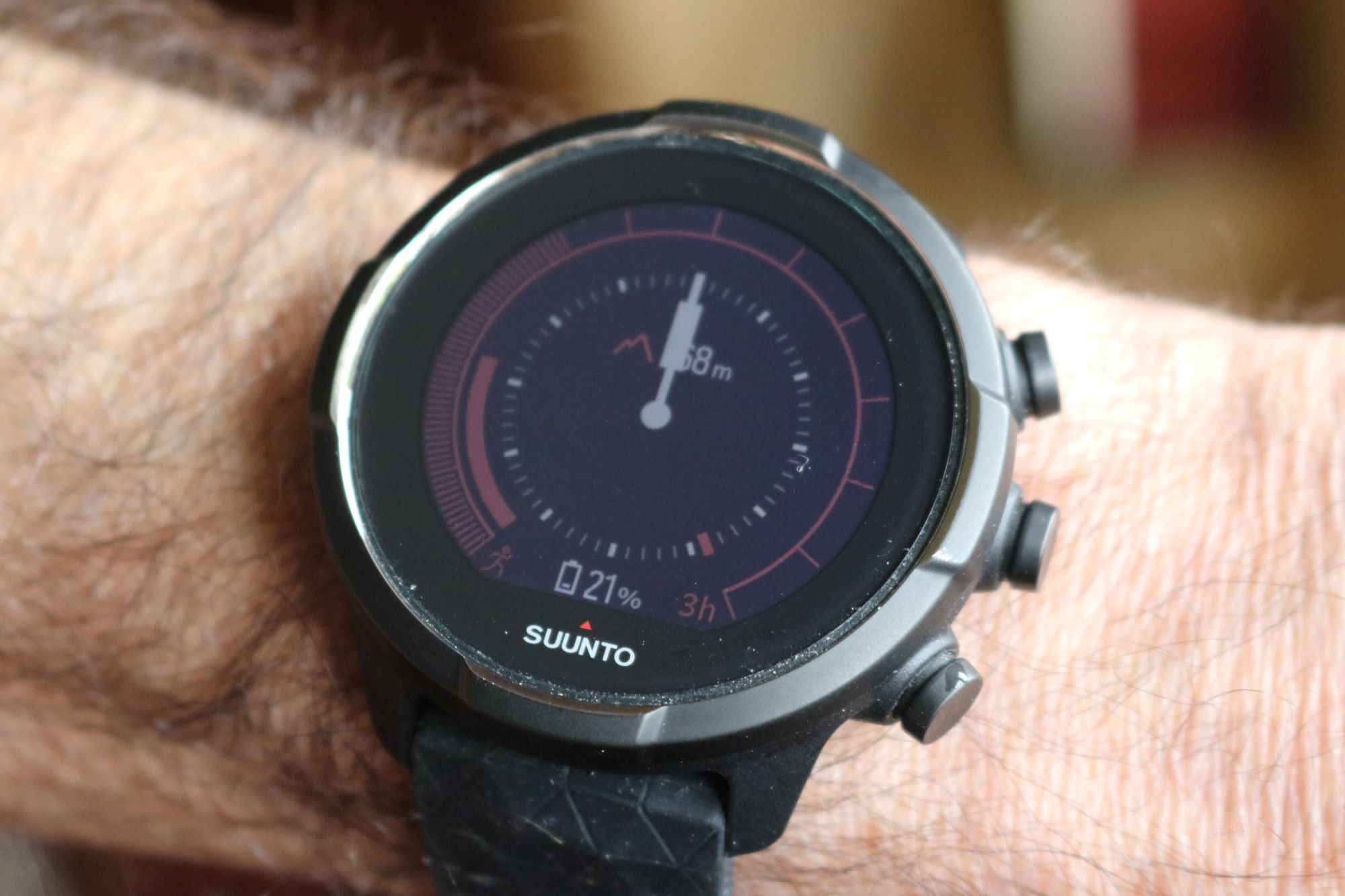
The Suunto 9 has a load of functionality for exercise and fitness tracking, wrapped up in an attractive, easy to use package. Most functionality works well, although the optical heart rate monitoring and navigation aren't the best
-
+
Robust
-
+
Good touchscreen
-
+
Decent battery life
-
+
Value vs industry leader
-
-
Less functionality than other smartwatches
-
-
Mapping functionality in Suunto app is difficult to use on a phone
-
-
No basemap when navigating
You can trust Cycling Weekly.

The Suunto 9 smartwatch is a chunky beast. It’s 50mm in diameter and 7mm deep, with a stainless steel bezel and a composite case and weighs 76 grams. It's not, however, heavy enough to feel ungainly or uncomfortable, unlike the Tag Heuer Connected Modular that we tested a couple of years ago. The case has smooth edges and I soon got used to wearing it day and night, although the strap buckle did occasionally dig into my wrist a little.
>>> Best smartwatches for cyclists
If you’re into exercise other than cycling, a smartwatch makes a lot of sense, as you’re not limited to a device with a large flat screen designed to fit on your bike. The Suunto 9 works just as well for running, swimming, hiking or mountaineering: in fact there are over 80 sport profiles available. It’s also useful for gravel riding, cyclocross or mountain biking, where a cycling GPS is prone to end up covered in dirt.
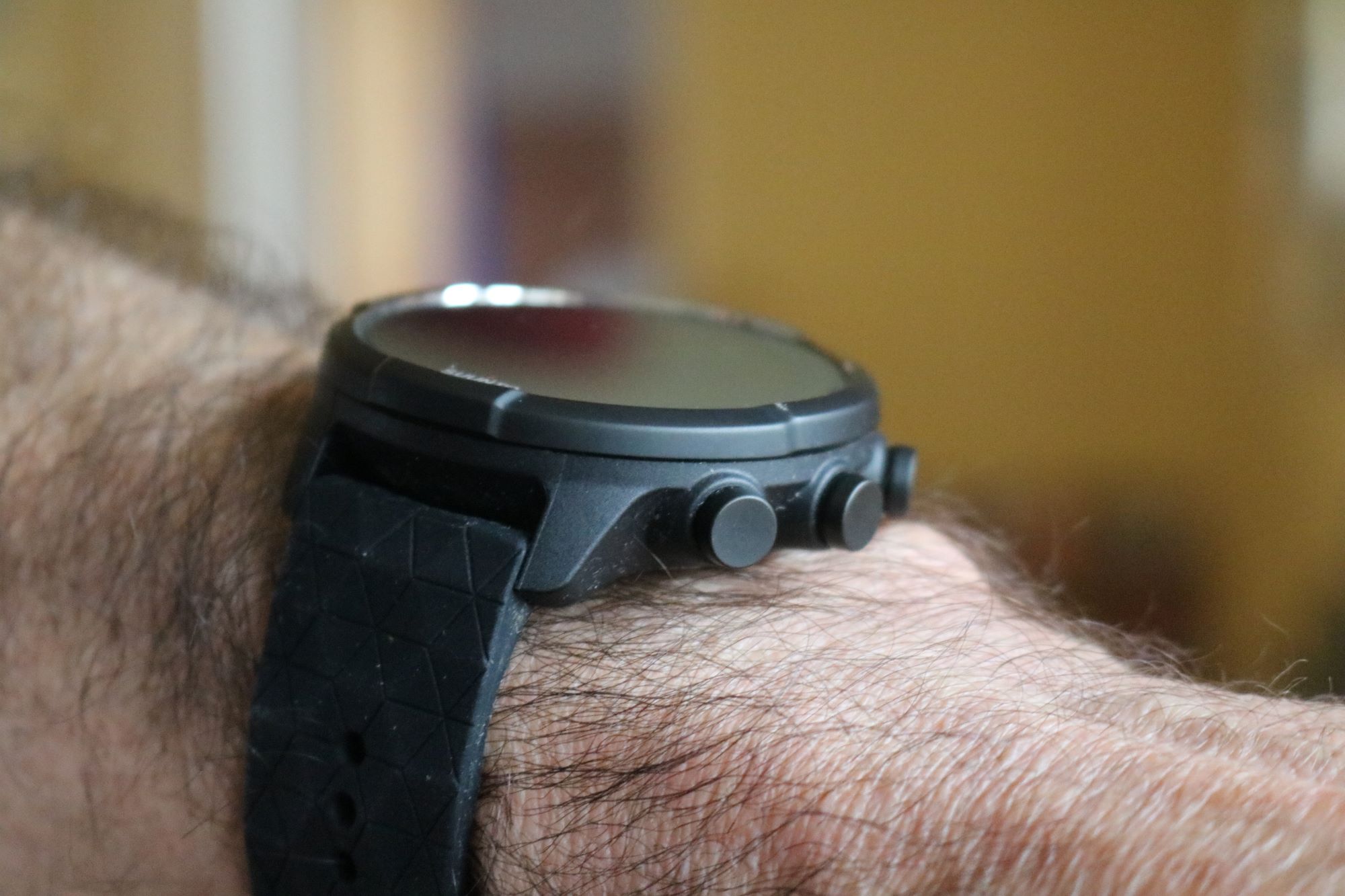
The heart of the Suunto 9 is a 320x300 pixel resolution touchscreen with a shiny sapphire crystal glass. Its backlight can be turned on by pressing one of the three buttons on the right side of the watch; it can be set to go to sleep to conserve battery. Even when not backlit, the range of standard watch faces is easy to read.
>>> Best smartwatches for cycling
Once you wake the watch up, you can swipe down through a range of screens with details of heart rate, recovery status, steps, training, altitude, sleep and fitness level. Behind each of these screens, there’s more detail that you can swipe left to access, usually including history.
Swipe up from the watch face and there are yet more screens, letting you start to log an exercise, navigate, see your exercise history, set timers or access your settings. Plus you can use the buttons as shortcuts to some of these screens. Swipe right and the Suunto 9 will return to the watch face.
It sounds complicated, but is actually very intuitive, assisted by the really sharp, sensitive touchscreen and prompts on the display.
Exercise logging
Logging an activity is really simple: activate the watch, swipe up one to the Exercise screen, swipe right to the activity list and select cycling (or indoor cycling, skiing, obstacle racing, or whatever floats your boat - including sailing and kayaking), wait for the start button to turn green showing that you’ve got a GPS fix and for your heart rate number to turn up and you’re away.
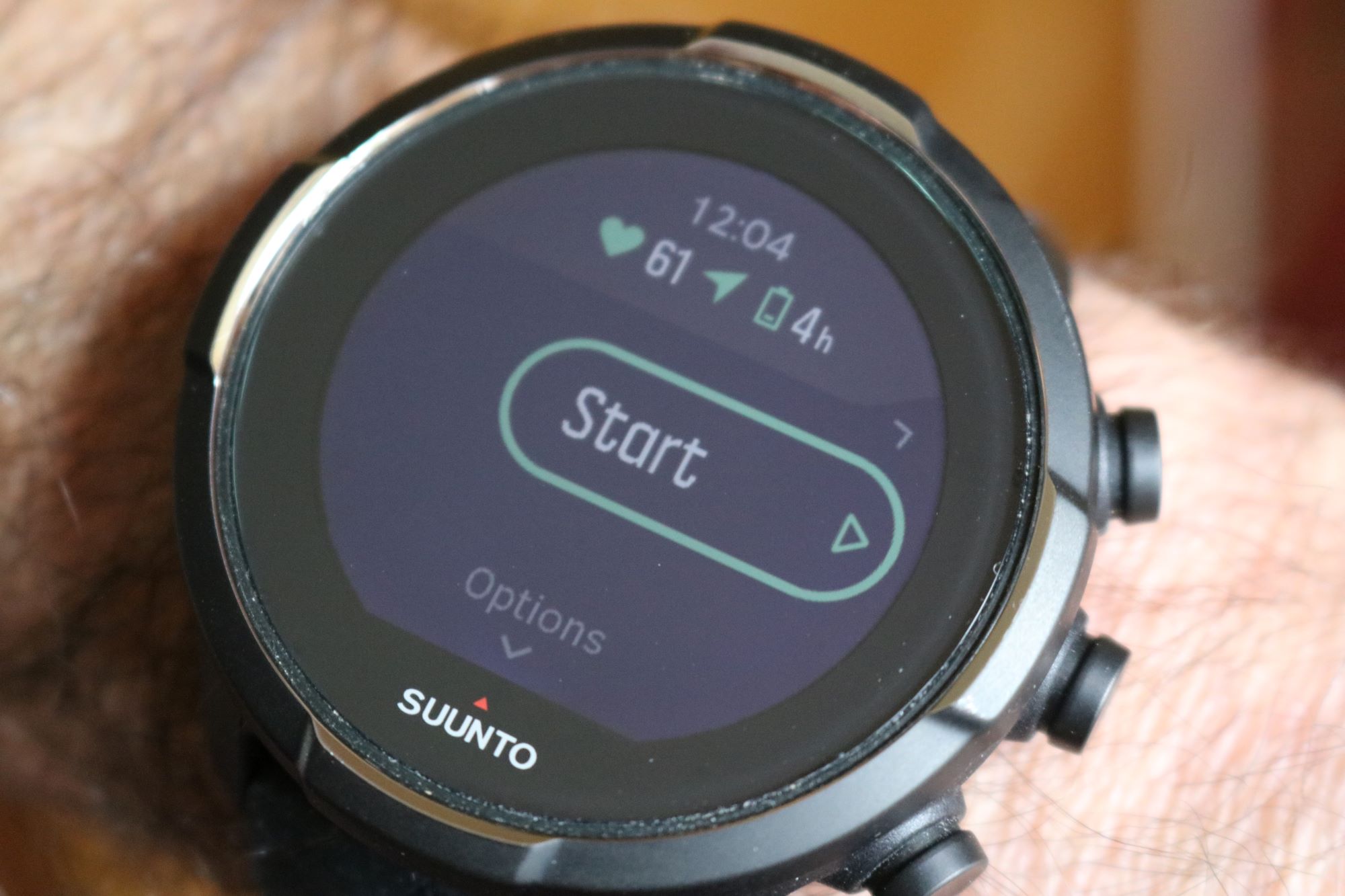
You get a series of easy to read screens which you can scroll through with different stats for your activity, including a breadcrumb trail of where you’ve been. By default you need to use the central button to swap screens, although you can activate the touchscreen to let you do this. You can also lock the watch so that you don’t stop your recording by mistake.
Once you’ve finished, just hit the top button to bring up the menu, then the lower one to stop recording. You can then record how you felt while exercising and access a series of summary screens for the activity.
While you’re exercising, the Suunto 9 will give you a continuous reading of your heart rate. Wrist-based measurement isn’t very accurate. My recorded heart rate hit a reported 212bpm on one ride - when I was walking a bike with a flat tyre - and stuck at 101bpm for the entire ride on another.
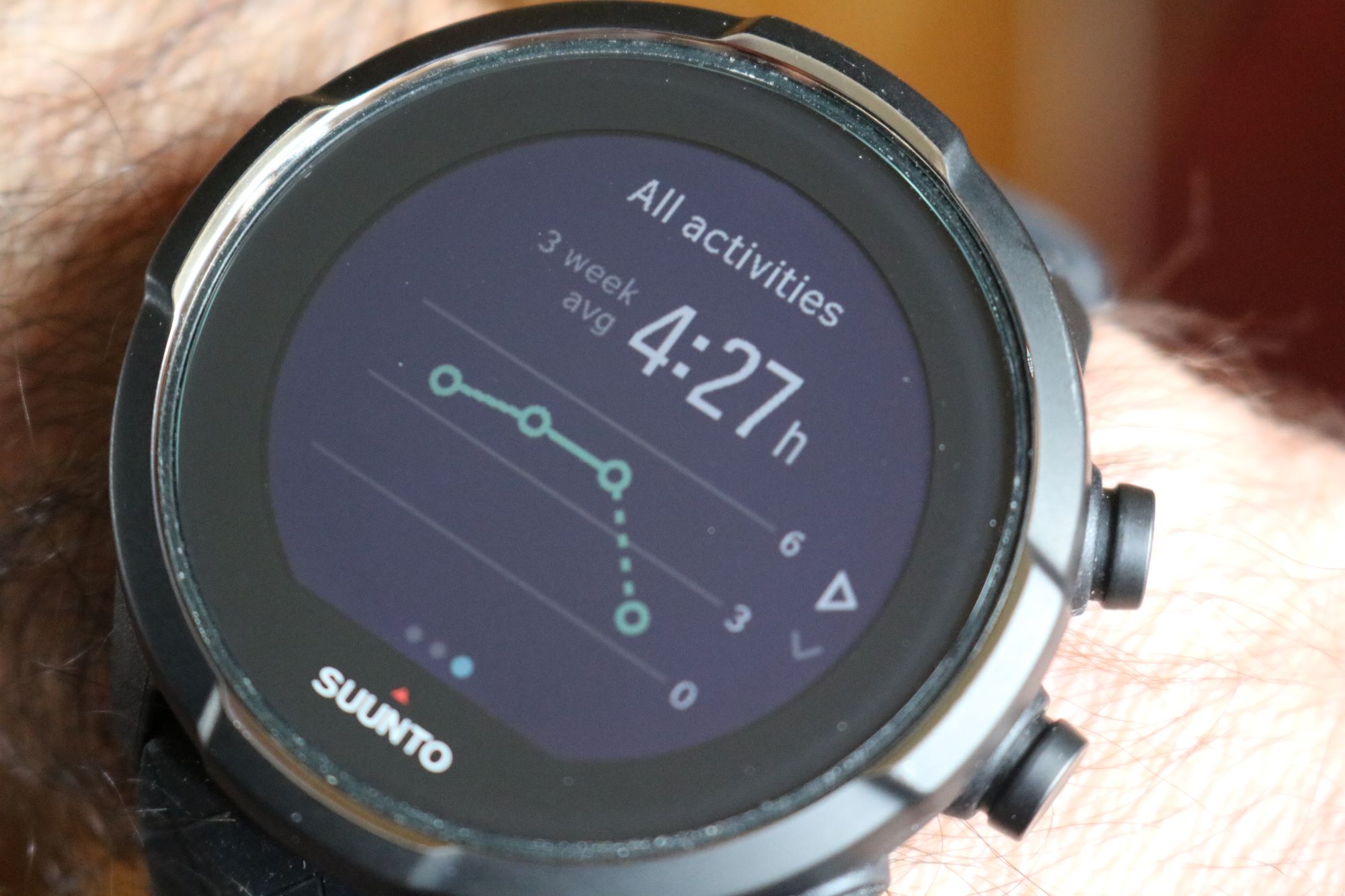
Misreading of heart rate when using a wrist based optical sensor isn’t unique to the Suunto 9 though; we had the same problem when testing a Polar Vantage M last year, although competitor Garmin seems to have nailed this in its multisport watches. It’s down to the tendency for the watch to slip down your wrist when exercising, loosening the junction to the watch’s back and for sweat and movement to interfere with the light-based sensors.
>>> Garmin Forerunner 935 review
Fortunately, Suunto has a solution. You can pair up the Suunto 9 to one of the best heart rate monitors for cycling (a chest strap) using Bluetooth. Wear your strap and you’ll get a much more accurate reading. You can do this per exercise type, so if you don’t care about having a good HR reading when walking, for example, you can just revert to the wrist-based measurement. And if you don’t wear your strap for a ride, the watch will use the wrist sensor instead.
Once you’ve finished your ride, the Suunto 9 will calculate a whole load of stats, including the all-important recovery time and your training load. Background data synchronisation to the Suunto app happens seamlessly via Bluetooth from the Suunto 9 once it’s close to your smartphone or you can initiate a sync yourself.
Suunto app
Suunto has moved from its Movescount computer app to the Suunto app, which is available for both Android and iOS devices.
It’s a decent user interface, giving you all your exercise history in a few screens, with the ability to drill down further, although it’s not as rich as Garmin Connect. There’s also social media connectivity and you can link to dozens of different apps, including the cyclist’s favourites, Strava, TrainingPeaks and Today’s Plan.
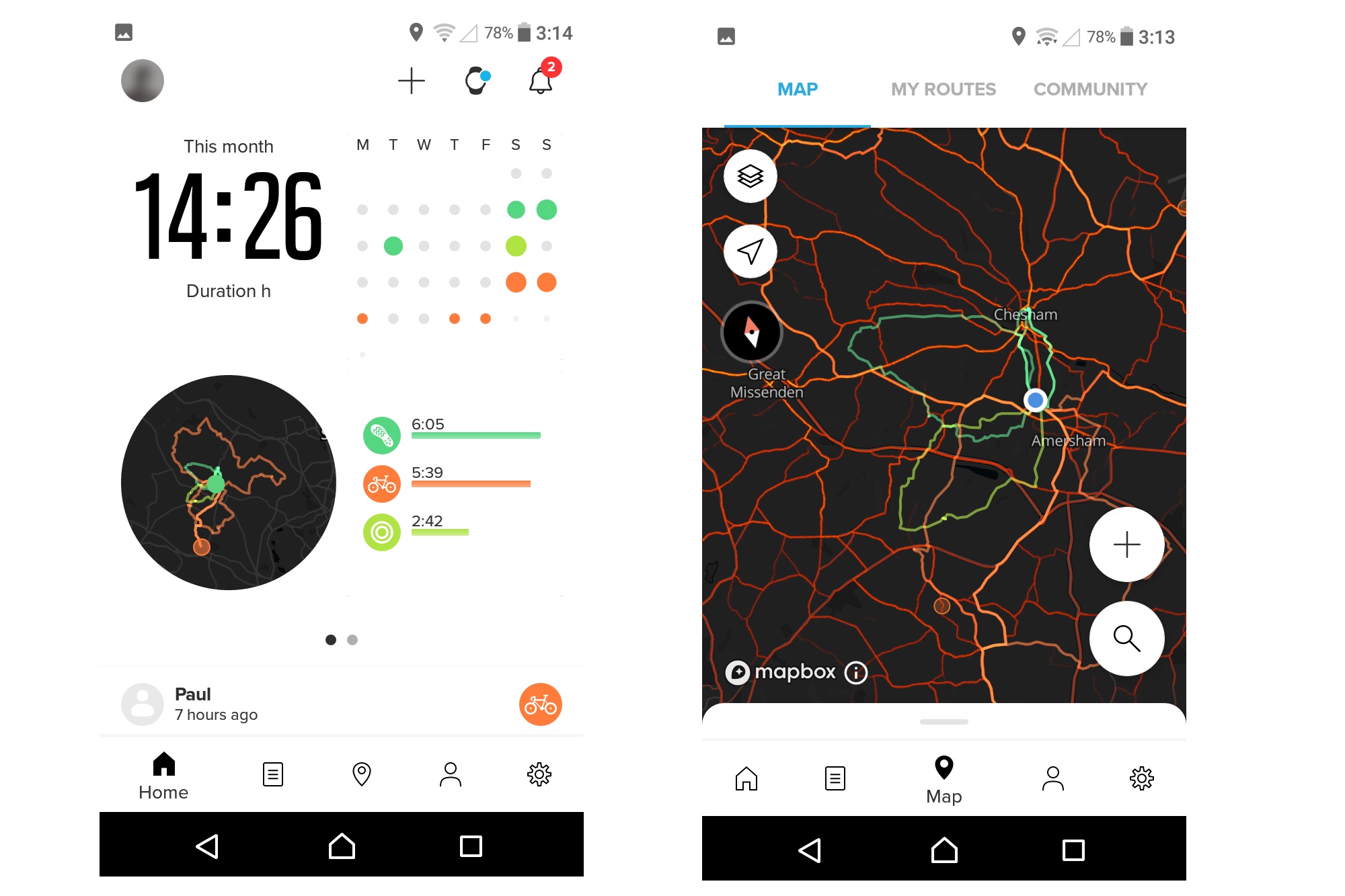
Among other data, you can see a history of your exercise, routes and sleep, which are also available in a slightly less detailed format on the Suunto 9 itself.
There’s route planning functionality too. That potentially lets you map out a route and follow it, although I found it difficult to use on a smartphone screen due to the limited size of the map. It might be a bit easier on a tablet, but even this is a step down from the old Movescount interface, which made route planning easy on a PC.
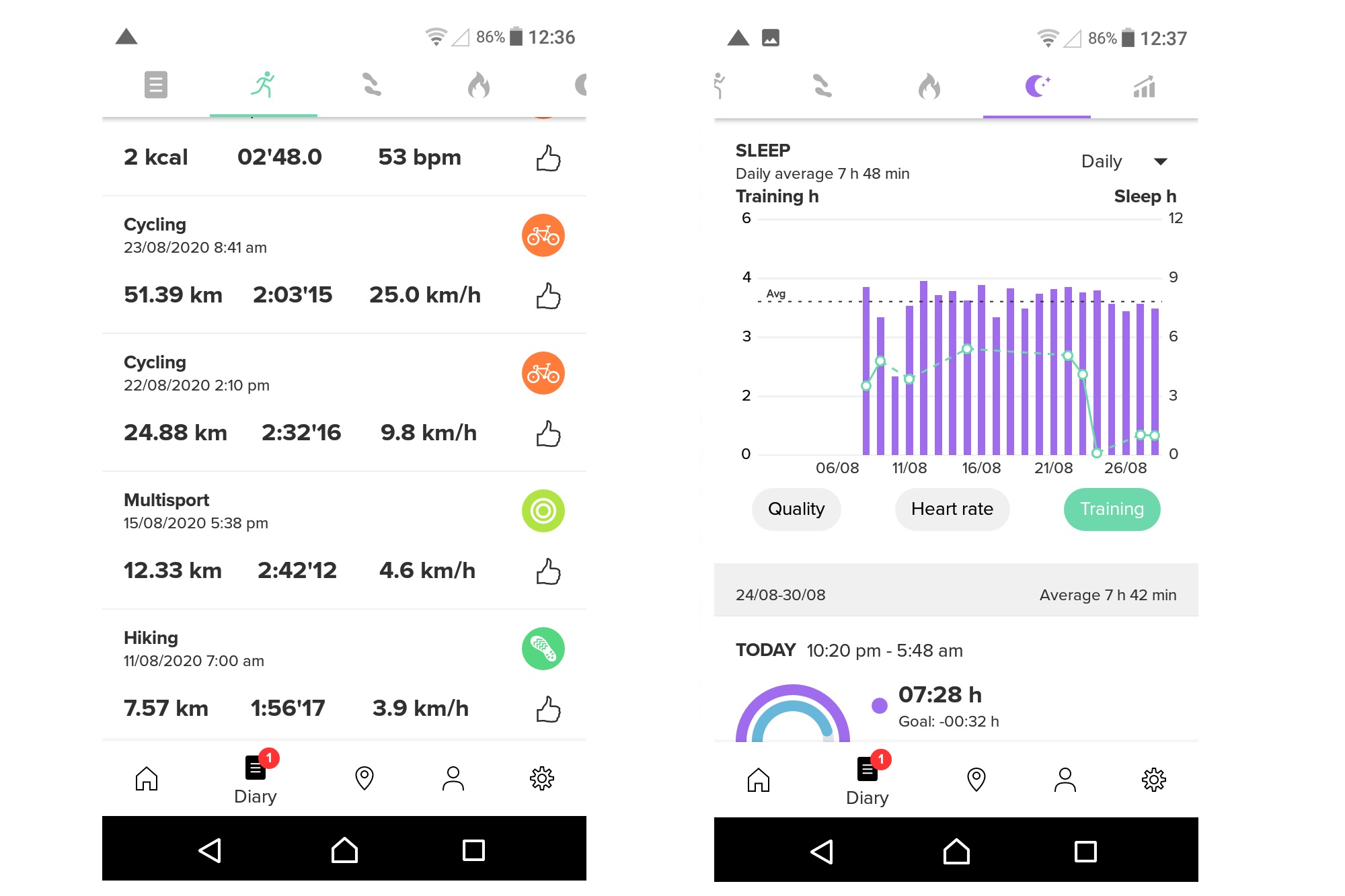
Fortunately, you can upload a gpx file of your route from other apps. It’s slightly fiddly to download the gpx file to your phone, then upload it to the Suunto app, but it’s doable.
Navigation
You only get a breadcrumb trail of your planned route displayed on the Suunto 9, with no basemap, although you do get off-route notifications.
I found it easy enough to follow a route, despite the lack of turn-by-turn guidance. When you do stray off route, you can see your trace diverge from the planned direction and once you return, there’s an arrowed prompt to make sure that you don’t double back on yourself.
Alerts
You can set a ton of alerts on the Suunto 9. I particularly liked the alert for sunset, which you can set to occur a set number of minutes prior to the event, but you can also get moon phases and alerts when you’ve met your exercise targets.
Additionally, when paired to your smartphone, you’ll get alerts for incoming calls and texts, although you can turn these off should you wish. There’s no quick reply function, unlike many fitness trackers and smartwatches.
>>> Smartphone vs cycling computer: which should you use?
With the Baro version of the Suunto 9, you can also set a storm alert. That’s based on a rapid drop in air pressure. It might work better in the mountains, but in suburban Buckinghamshire, it failed to spot the thunderstorms that broke a summer heatwave and told me about another storm several hours after it had started. Accuracy, it seems, could be improved here.
Sleep tracking
Another element of sports performance that is growing in significance is tracking your sleep patterns: the Suunto 9 does that, although not as precisely as specialists such as Fitbit. You have to tell the watch your usual bedtime, which it uses as a hint that you might be going to sleep.
After that, the watch periodically wakes up for a few minutes during the night to check your heart rate, casting a green glow on the walls. It seemed fairly consistent in identifying the length of deep sleep I had, but could be tricked into believing I was still asleep if I lay still in bed once I awoke.
Battery life
Keeping a smartwatch running can be the fly in the ointment - there’s a lot of demand on its battery. But Suunto has impressive battery management tech; I consistently got the best part of a week’s use before the battery started to give up, when using the Suunto 9 for a mix of activity tracking, all day wear and sleep tracking.
When you start recording an activity, you’re given an estimate of how long the battery will last; six hours of activity tracking depleted the battery around 50%, using the highest GPS resolution setting. If you were heading out for longer adventures, you could lower the GPS sensitivity at the start to ensure that you had the battery life to cover your expected exercise duration.
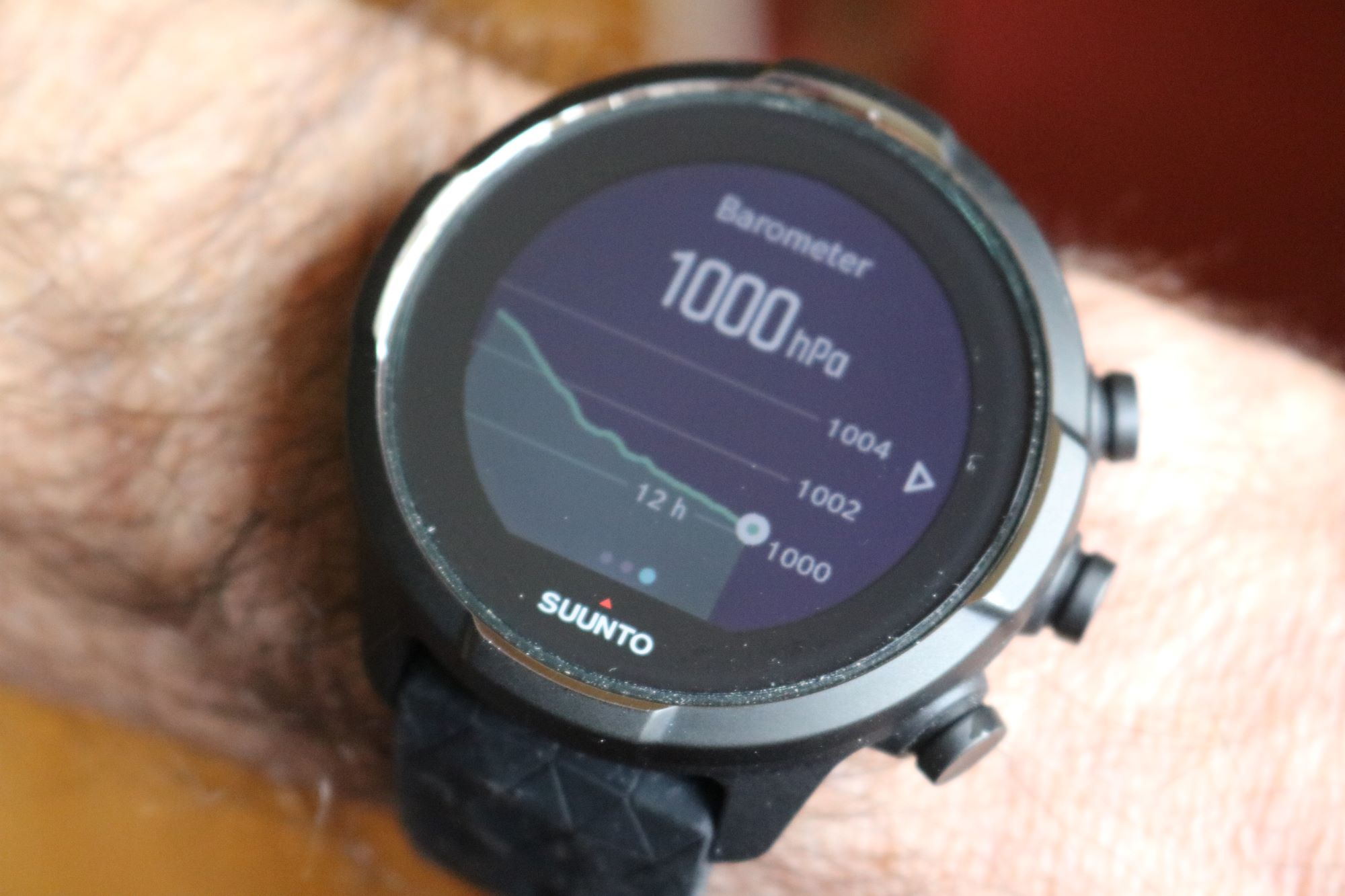
The Suunto 9 is designed to step down functionality gracefully if the battery does get depleted during an activity, using a combination of periodic GPS tracking and its accelerometers to work out where you’ve been and prompting you to reduce the recording accuracy.
When the watch needs recharging, the magnetic connector clips easily onto its back and charges it up quickly, in a couple of hours or less.
In conclusion
I really liked a lot about the Suunto 9 Baro. It’s very versatile, handling lots of different sports, and can be parameterised to meet your needs. Battery life is good and, although its wrist based heart rate measurement has its downsides, it’s an unobtrusive way to keep track of your health and performance when not exercising, and when you want to the Suunto 9 lets you get around its inaccuracy by using a strap.
There’s a ton of functionality in a package that’s easy to live with and will give you as much data as you want to track your exercise and fitness, as well as keeping track of your non-exercise activity during the day.
>>> Computer, GPS and watches reviews
If you aren’t interested in air pressure and accurate altitude measurement, there’s a non-baro version of the Suunto 9 available too which drops the price by around £90.
Suunto also sells a £685 Titanium Ambassador Edition that comes with two straps if you want to get flashy with your smartwatch and there’s a custom design option that lets you choose your own watch components.

Thank you for reading 20 articles this month* Join now for unlimited access
Enjoy your first month for just £1 / $1 / €1
*Read 5 free articles per month without a subscription

Join now for unlimited access
Try first month for just £1 / $1 / €1
Get The Leadout Newsletter
The latest race content, interviews, features, reviews and expert buying guides, direct to your inbox!
Paul started writing for Cycling Weekly in 2015, covering cycling tech, new bikes and product testing. Since then, he’s reviewed hundreds of bikes and thousands of other pieces of cycling equipment for the magazine and the Cycling Weekly website.
He’s been cycling for a lot longer than that though and his travels by bike have taken him all around Europe and to California. He’s been riding gravel since before gravel bikes existed too, riding a cyclocross bike through the Chilterns and along the South Downs.
-
 'This is the marriage venue, no?': how one rider ran the whole gamut of hallucinations in a single race
'This is the marriage venue, no?': how one rider ran the whole gamut of hallucinations in a single raceKabir Rachure's first RAAM was a crazy experience in more ways than one, he tells Cycling Weekly's Going Long podcast
By James Shrubsall Published
-
 Full Tour of Britain Women route announced, taking place from North Yorkshire to Glasgow
Full Tour of Britain Women route announced, taking place from North Yorkshire to GlasgowBritish Cycling's Women's WorldTour four-stage race will take place in northern England and Scotland
By Tom Thewlis Published
-
 Positive signs for UK bike industry as Halfords cycling sales grow
Positive signs for UK bike industry as Halfords cycling sales growRetailer admits that the impact of Donald Trump's tariffs remains to be seen
By Tom Thewlis Published